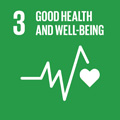- Docente: Valentina Ambrosini
- Credits: 2
- SSD: MED/36
- Language: English
- Moduli: Alberto Bazzocchi (Modulo 1) Valentina Ambrosini (Modulo 2)
- Teaching Mode: In-person learning (entirely or partially) In-person learning (entirely or partially) (Modulo 1); In-person learning (entirely or partially) (Modulo 2)
- Campus: Bologna
- Corso: Single cycle degree programme (LMCU) in Medicine and Surgery (cod. 9210)
Learning outcomes
Describe the principles and applications of the major techniques used in radiology and nuclear medicine. Describe the principal sources of radiological risk and the relevant protective measures for operators and patients. Understand the role of the radiologist on the health care team and the relationship of radiology to other clinical disciplines.
Course contents
NUCLEAR MEDICINE MODULE
1. Basic Nuclear Medicine Notions and Basic physics and radiopharmacy notions
2. Pros and Cons of nuclear medicine procedures as compared to other imaging techniques
3. conventional nuclear medicine (Scintigraphy/SPECT): bone, renal thyroid, lung, myocaridal, brain)
4. PET/TC imaging:
-imaging with 18F-FDG tracers
-imaging with non 18F-FDG tracers
5. Basic principles of radionuclide therapy
RADIOLOGY MODULE
- Definition, history and development of Radiology. The role of Imaging in medicine
- Imaging techniques: principles and applications
- Contrast media
- Imaging biomarkers, and fundamentals of Imaging semiotics
- Risks and safety in Radiology
- Introduction to Interventional Radiology
- The organization of a radiology department. The role of radiologists
- Frontiers and future directions in Diagnostic and Interventional Radiology
- From clinical question to answer. How to formulate and present a proper clinical question. How to optimize use of resources and techniques to answer it (how to choose the right imaging technique). How to interpret a radiology report.
Readings/Bibliography
NUCLEAR MEDICINE
1. Clinical Nuclear Medicine. Editors: Hans-Jungen Biersack, Leonard M.Freeman. Springer
2. Nuclear Oncology. Editors: Cumali Aktolum, Stanley J. Goldsmith. Wolters Kluwer
3. Principles and practice of PET/CT. part 1 and 2. Technologist's Guide. Official publication of the European Journal of Nuclear Medicine and Molecular Imaging
4. Taylor, Schuster, Alazraki. Medicina Nucleare. Edizioni Minerva Medica
RADIOLOGY
Grainger & Allison's Diagnostic Radiology (7th Edition), Elsevier
Hardcover ISBN: 9780702075247 eBook ISBN: 9780702075629 eBook ISBN: 9780702075612
Learning Radiology, Recognizing the Basics (4th Edition), Elsevier
eBook ISBN: 9780323567268 eBook ISBN: 9780323567275 eBook ISBN: 9780323567282 Paperback ISBN: 9780323567299
Radiology Fundamentals, Introduction to Imaging & Technology, Springer
ISBN: 978-3-030-22173-7
https://www-pub.iaea.org/mtcd/publications/pdf/pub1564webnew-74666420.pdf
Teaching methods
oral lecture; clinical case discussion
Assessment methods
Final evaluation will be performed by means of a joint test on all topics covered in the integrated course. The test will be based on 40 multiple choice questions (4 available aswers, only one is correct). In general, at least 5 questions from each different teaching module will be included in the test. The exam is passed (score 18) when at least 24 questions are correctly answered. When all the questions are answered correctly the final score will be 30, with honours
Teaching tools
power point presentation and clinical case discussion
Office hours
See the website of Valentina Ambrosini
See the website of Alberto Bazzocchi
SDGs

This teaching activity contributes to the achievement of the Sustainable Development Goals of the UN 2030 Agenda.
